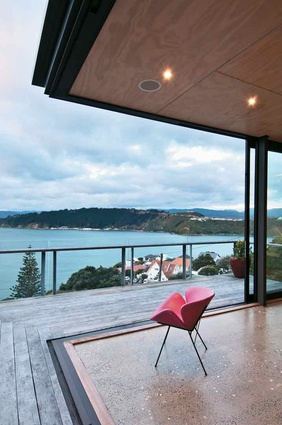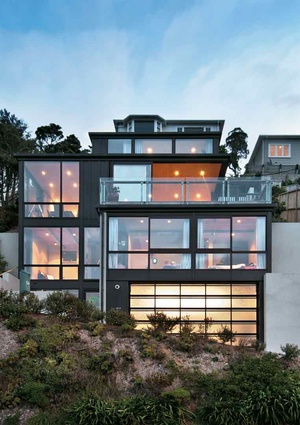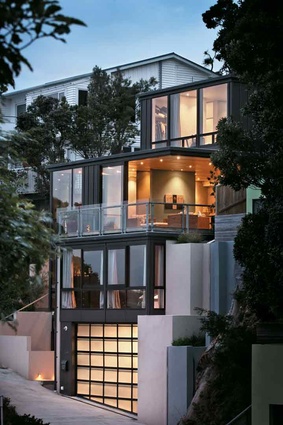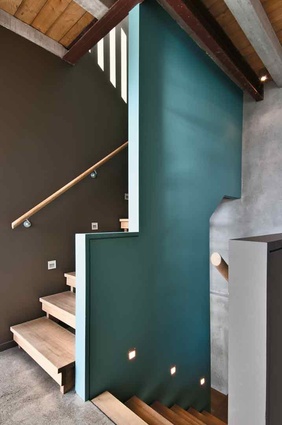Houses Revisited: Hataitai house
A house in Wellington's Hataitai puts its back to the hill to enjoy a steep site with superb views. First published in 2012.
Visit the website of John Mills Architects and one of the first images you will be greeted by is a colourful, wobbly watercolour house plan. It is a joyous little sketch — almost frivolous — and yet just as concerned with building a home as any technical specification. It is, I think, emblematic of an architect incapable of forgetting that while houses are complicated containers, it’s the messy business in the box that really counts.
This house, in Wellington’s harbour edge suburb of Hataitai, is a good example. The pragmatics of the brief might have caused a lesser designer to avoid eye contact while retreating to the nearest fire escape. But in a city of hills where easy building plots arrive with the frequency of Halley’s Comet, you take what you can get. A 250m² house on a 280m² site? Madness, and yet here it is.
In his typically cheerful manner, Mills describes the work of a Wellington architect as ‘the art of vertical living’. This is certainly the case here. Balanced at the bottom of a perilously steep sub-divided section, it looks like a thoroughly urbane individual lounging at the beach. The casual shuffling of the floors belies the significant earthworks required to anchor occupation on the edge, and like an iPad the shoji-inspired garage door hides its terrifying engineering behind an innocent pale screen. And engineering there is. Concrete ensures against seismic concerns and provides the mass to keep the house both warm in winter and cool in summer. Indeed, it is so thermally efficient that the computer system monitoring the in-slab heating is yet to be convinced that it should be turned on.
I know that sounds a little like HAL in Stanley Kubrick’s 2001: A Space Odyssey, and so it might have been if the ‘messy’ had not been carefully included. By that, I don’t mean the kind of messiness hidden behind a ‘Get The Hell Out’ sign on a teenager’s bedroom door, but a gentler, thoughtful disordering that colours daily life in a positive way. The stair is a case in point. It meanders upward the way a drunk might climb a tree so that each floor is presented uniquely.
Similarly, messing with material surfaces is a feature. The hard concrete walls are softened with a warm pumice-based plaster while the non-structural walls are picked out in colour swatches. The plywood ceiling has been ‘blonded’ and underfoot the complexity of the slab aggregate is on display as a polished surface. Outside a dark board and baton skin belies the industrial bones underneath. But, of course, when one arrives home at the end of the day none of this is quite so apparent.
Sitting against the dramatic panorama provided by Wellington Harbour it is tempting to assume that the benefits of vertical living are sun and view. They’re not to be taken for granted, certainly, but when curtains are drawn we need a bit more. We need our houses to be a little bit messy in order to challenge our complacencies, and to ensure that our lives remain joyous, and our calves firm.
Click here to see more Houses Revisited. And sign up to our email newsletters to receive Houses Revisited straight to your inbox.
Note: These are stories from our archives and, since the time of writing, some details may have changed including names, personnel of specific firms, registration status, etc.















